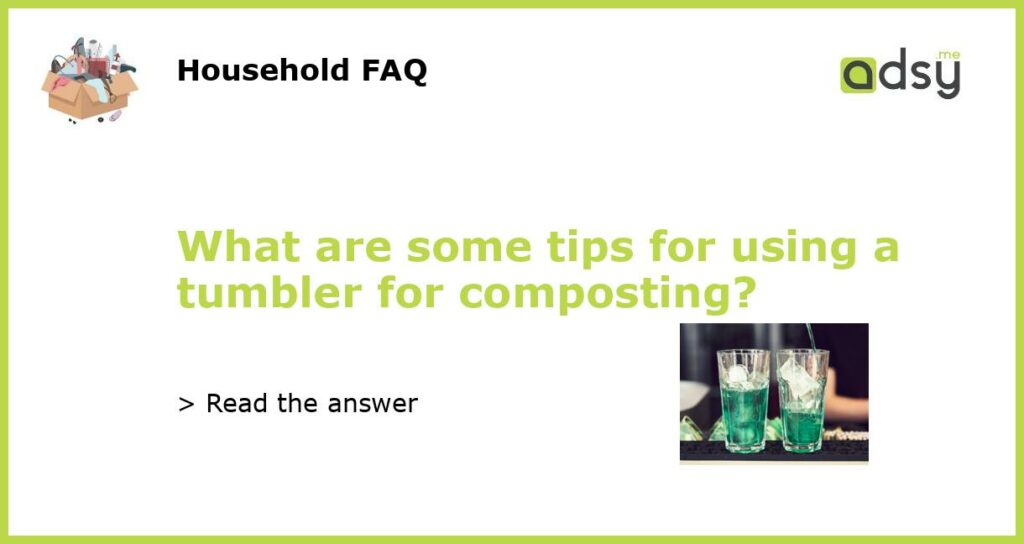Tips for Using a Tumbler for Composting
Composting is a great way to reduce waste and create nutrient-rich soil for your garden. One popular method of composting is using a tumbler. A tumbler is a specially designed bin that allows you to easily turn and mix the compost. If you are considering using a tumbler for composting, here are some tips to help you get started.
Choose the Right Size Tumbler
When selecting a tumbler for composting, it is important to choose the right size for your needs. Consider the amount of organic waste you generate and the space available in your yard or garden. If you have a small garden and generate a minimal amount of waste, a smaller tumbler may be sufficient. However, if you have a large garden or generate a lot of organic waste, a larger tumbler may be more appropriate. It is also important to consider the height and accessibility of the tumbler, as you will need to be able to easily turn and mix the compost.
Start with the Right Mix of Ingredients
Composting requires a mix of green and brown organic materials. Green materials include things like grass clippings, fruit and vegetable scraps, and coffee grounds. Brown materials include items like dry leaves, straw, and shredded newspaper. To ensure successful composting, it is important to start with the right mix of ingredients. Aim for a ratio of roughly 2 parts green materials to 1 part brown materials. This will provide the right balance of nitrogen and carbon, which are necessary for the decomposition process.
Turn and Mix Regularly
One of the advantages of using a tumbler for composting is that it makes it easy to turn and mix the compost. Regular turning and mixing help aerate the compost, providing the necessary oxygen for decomposition. This will help speed up the composting process and prevent the compost from becoming compacted or smelly. Aim to turn and mix your compost at least once a week. Some tumblers even have built-in mechanisms that make turning even easier.
Monitor Moisture Levels
Moisture is an important factor in composting. Too much moisture can lead to a slimy, smelly mess, while too little moisture can slow down the decomposition process. Aim for your compost to be about as moist as a wrung-out sponge. If your compost is too dry, you can add water using a watering can or hose. If it is too wet, you can add dry brown materials to absorb excess moisture. Regularly monitor the moisture levels of your compost and make adjustments as necessary.
Use the Mature Compost
After weeks or months of composting, your organic waste will have transformed into nutrient-rich compost. This mature compost can be used to improve your soil or as a top dressing for your plants. Before using the compost, make sure it is fully decomposed and has a crumbly texture. Any recognizable organic material should be further composted. Spread a layer of mature compost on your garden beds or mix it into the top few inches of soil. This will provide your plants with essential nutrients and help improve the overall health of your garden.






